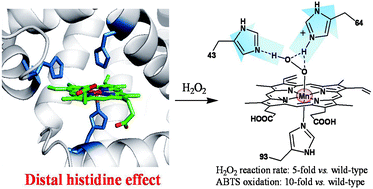Effect of distal histidines on hydrogen peroxide activation by manganese reconstituted myoglobin†
Abstract

- This article is part of the themed collection: Metallomics in China
* Corresponding authors
a
Beijing National Laboratory for Molecular Sciences, State Key Laboratory of Rare Earth Materials Chemistry and Applications, College of Chemistry and Molecular Engineering, Peking University, Beijing 100871, P. R. China
E-mail:
zhangjunlong@pku.edu.cn
Fax: +86 10-62767034

 Please wait while we load your content...
Something went wrong. Try again?
Please wait while we load your content...
Something went wrong. Try again?
 Fetching data from CrossRef.
Fetching data from CrossRef.
This may take some time to load.
Loading related content
